Blakeney Point seals to star in BBC Winterwatch
- Published
Winterwatch is filming at Blakeney for the new series in January 2015
Pioneering filming techniques are set to be used to capture a record-breaking seal colony in north Norfolk for the new season of the BBC's Winterwatch.
Military-grade thermal imaging will be used for the first time to film thousands of seals on the Blakeney Point National Trust reserve at night.
Producer Bill Markham said the technology allowed for "an intimate view" that was previously impossible.
More than 1,756 pups have been born at the reserve so far this winter.
The number has already broken the 2013-14 season total of 1,566 with at least another two of months of pupping still to go.
An additional 700 pups have been born further around the coast at Horsey which is "slightly up" on the same time last year, said Eilish Rothney from the Friends of Horsey Seals, external group.

BBC Winterwatch is set to investigate activity in the Blakeney seal colony at night
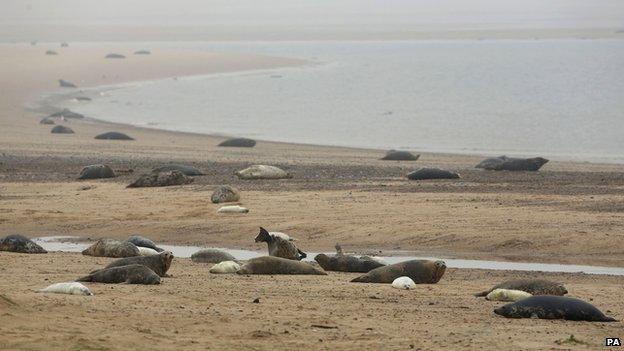
The Blakeney Point seal colony has been growing year-on-year for more than a decade. Winterwatch presenter Iolo Williams will be investigating the nocturnal activity on the National Trust reserve
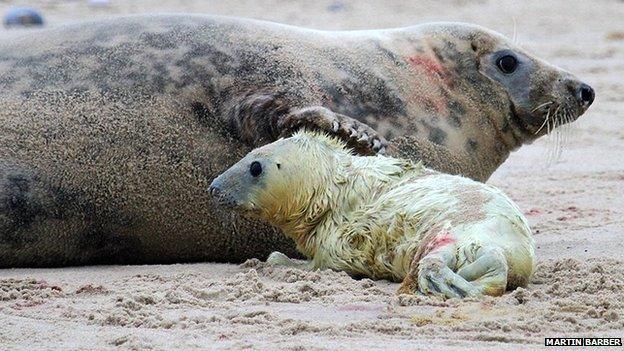
Hundreds of seal pups are also being born further around the Norfolk coast at Horsey
"In peak pupping season there can be up to 45 pups born a night but we don't really know what goes on under the cover of darkness so we're bringing our thermal imaging camera to Blakeney Point to see what's going on," said Mr Markham.
"The technology allows us to use this thermal imaging camera as a wildlife camera with such high definition we can zoom in and film wildlife with that intimate view we didn't used to get with the old thermal imaging system."
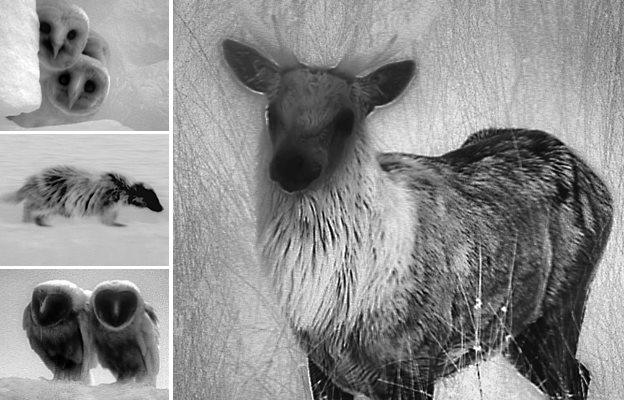
Winterwatch has previously used thermal imaging technology, but this is the first time a seal colony will be filmed at night
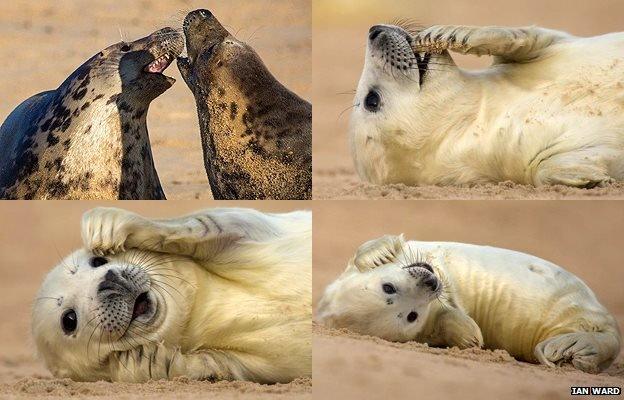
"There might be a bit of illicit nookie in the sand dunes," said wildlife producer Bill Markham
Ajay Tegala, one of the National Trust rangers responsible for counting the seals twice a week, said: "We have never looked at the rookery at night before, so whatever is captured will be of great interest and contribute to our knowledge and understanding of these fascinating mammals.
"The bulls develop a harem of up to six cows, based on their age, strength and fighting ability... and the seals mate again soon after giving birth."
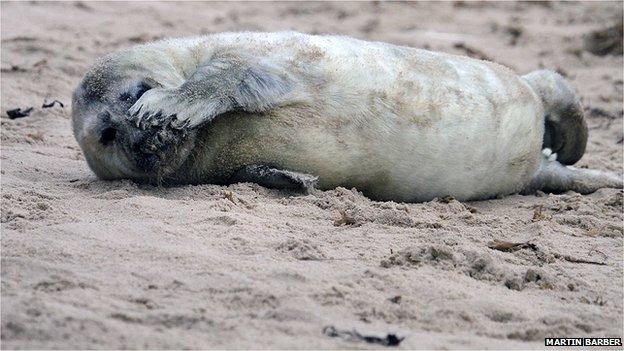
Wardens have so far recorded 1,756 pups, 533 more than at this point in the pupping season last winter
'Illicit nookie'
For the first three weeks the white-coated pups will stay with their mothers feeding on milk.
Over this time they will triple in weight before moulting to reveal their distinguishing grey marks and waterproof coat for the first time.
Mr Markham added: "The dominant males will fight off other males to keep the harem to themselves for mating - but if another male isn't big and strong he might try to sneak in.
"In the daytime he might get spotted. My guess is at night time this might happen more frequently so there might be a bit of illicit nookie in the sand dunes which we might pick up on camera."
Winterwatch returns to BBC Two on Monday 19 January
- Published26 November 2014
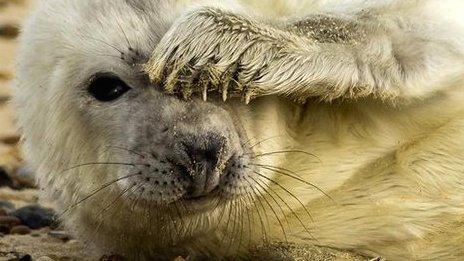
- Published26 November 2014
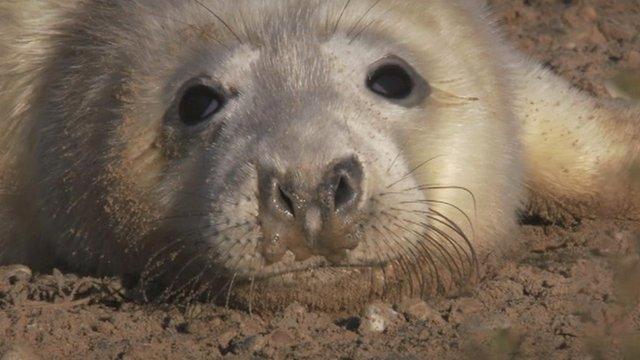
- Published3 October 2012

- Published16 December 2011
